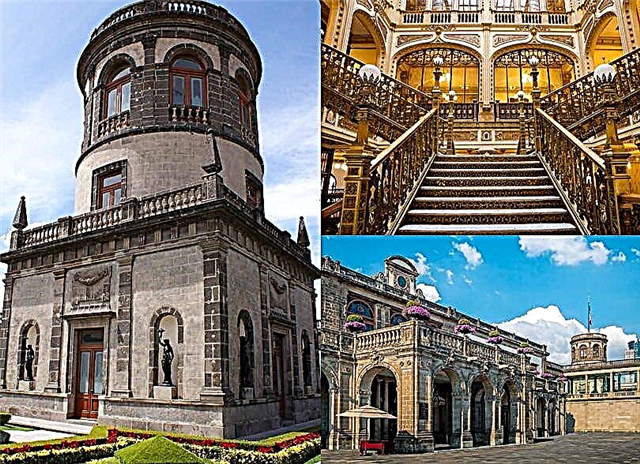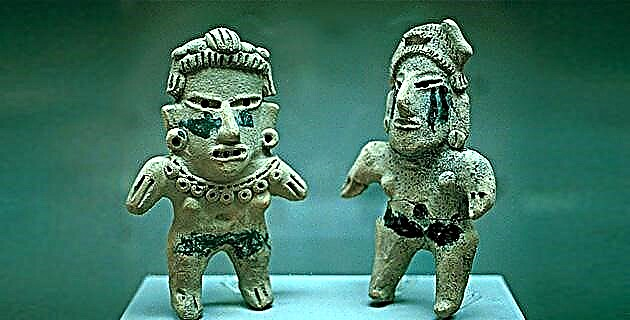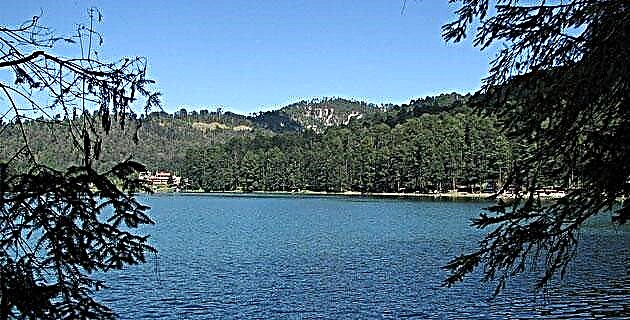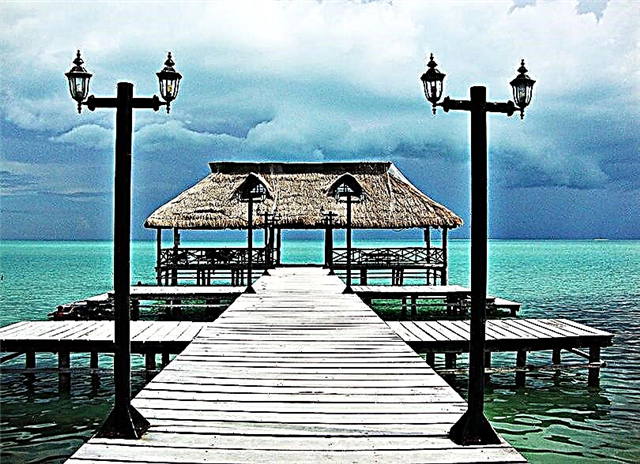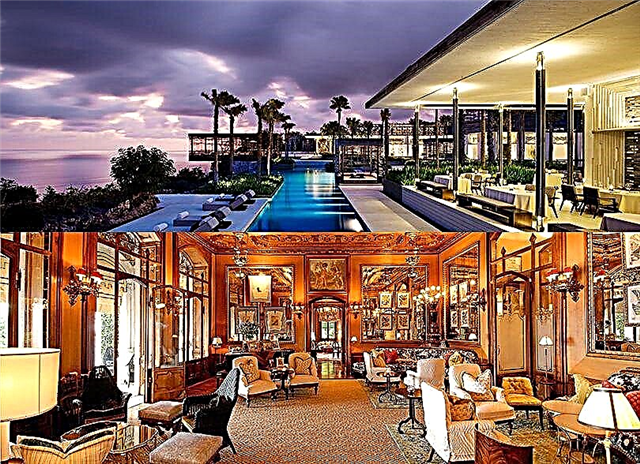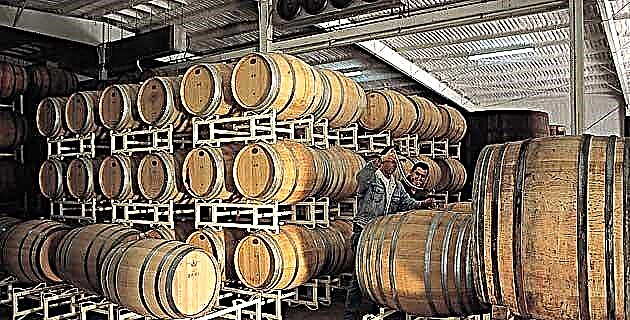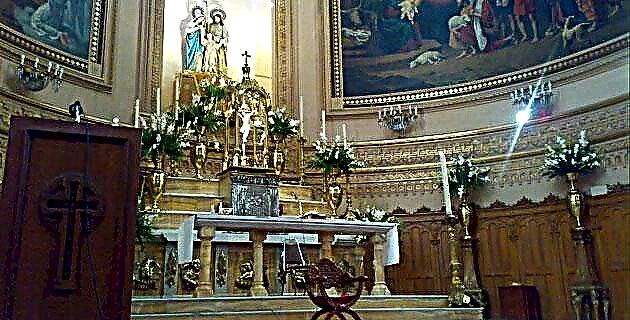
Built mostly in an eclectic style, turn-of-the-century churches are silent witnesses to the enormous growth of our city.
The period known as the Porfiriato spanned a little more than 30 years of Mexican history (1876-1911), without considering the brief interruptions of the governments of Juan N. Méndez and Manuel González. Although during that time the situation in the countryside was extremely difficult, General Porfirio Díaz led to a great boom in the country's economy that resulted in outstanding construction activity, especially in the most important cities.
The new needs of the economy generated urban expansion, thus beginning the growth and foundation of colonies and subdivisions that, according to the economic position of the population, had different types of construction, most influenced by the architectural styles brought from Europe. , mainly from France. It was the golden age for the rich who inhabited new colonies such as Juárez, Roma, Santa María la Ribera and Cuauhtémoc, among others.
In addition to services such as water and lighting, these new developments had to be equipped with temples for the religious service of their residents, and at that time Mexico already had an excellent group of professionals to carry out these works. Such is the case of Emilio Dondé, author of the Bucareli Palace, today the Ministry of the Interior; Antonio Rivas Mercado, creator of the column of Independence; by Mauricio Campos, who is credited with the Chamber of Deputies, and by Manuel Gorozpe, designer of the Sagrada Familia church.
These architects put into practice a regressive architecture, that is, they worked with “neo” styles such as Neo-Gothic, Neo-Byzantine and Neo-Romanesque, which were actually returns to ancient fashions, but using modern construction methods such as reinforced concrete and cast iron, which began to come into vogue from the last quarter of the last century.
This step into the architectural past was the product of a movement called romanticism, which emerged in Europe in the 19th century and lasted until the first decades of the present. This movement was a nostalgic rebellion against cold neoclassical art, which was inspired by elements of sober Greek architecture and proposed a return to the ornate and sumptuous styles that academicism had discarded.
The architects of the Porfiriato then studied more elaborate and less classical styles; His first neo-Gothic works emerged in Mexico in the second half of the 19th century, and many were eclectic, that is, made up of elements belonging to various styles.
One of the best examples we have of the unknown Porfirian religious architecture is the Church of the Sagrada Familia, located in the streets of Puebla and Orizaba, in the Roma neighborhood. Of neo-Romanesque and neo-Gothic styles, its author was the Mexican architect Manuel Gorozpe, who started it in 1910 to finish it two years later in the middle of the Revolution. Its structure is made of reinforced concrete and it is possible that due to that it was the victim of harsh criticism such as that of the writer Justino Fernández, who describes it as "mediocre, showy and decadent in taste", or as that of the architect Francisco de la Maza, who he refers to it as "the saddest example of the architecture of the time." In fact, almost all the churches of this time have been quite criticized.
Mr. Fernando Suárez, vicar of the Sagrada Familia, affirms that the first stone was laid on January 6, 1906 and that on that day people arrived on Chapultepec Avenue to attend mass that was celebrated in a shed. Towards the twenties, the Jesuit Father González Carrasco, a skilled and fast painter, decorated the interior walls of the temple with the help of Brother Tapia, who only made two paintings.
According to an inscription, the bars that limit the small north side atrium were built by the great Gabelich smithy, which was in the Doctors' colony and was one of the best and most famous of the first half of this century. The few wrought iron works that survive in colonies such as Roma, Condesa, Juárez and Del Valle, among others, are precious and are mostly due to -this magnificent smithy that unfortunately no longer exists.
Another reason that makes this church very visited is that the remains of the Mexican martyr Miguel Agustín Pro, a Jesuit priest ordered to be shot by President Plutarco Elías Calles on November 23, 1927, in times of religious persecution, were They are kept in a small chapel located at the south side entrance.
Just a few blocks away, on Cuauhtémoc Avenue, between Querétaro and Zacatecas, stands the majestic church of Nuestra Señora del Rosario, the work of Mexican architects Ángel and Manuel Torres Torija.
The construction of this neo-Gothic temple began around 1920 and was completed around 1930, and although it does not belong to the Porfirian era, it is necessary to include it in this article due to its affinity with the styles of those times; furthermore, it is probable that his project was carried out before 1911 and that its construction was delayed.
As is natural in the Gothic style, in this church the rose window on the façade stands out, and on this a triangular pediment with the image in relief of Our Lady of the Rosary; Also noteworthy are the ogival doors and windows, as well as the arches of the three naves of which its spacious interior is made up, embellished by striking leaded stained glass windows and lines with a marked tendency to verticality.
On Calle de Praga number 11, surrounded by the hustle and bustle of the Zona Rosa, in the Juárez neighborhood, the church of Santo Niño de la Paz is boxed in and hidden among tall buildings. Its parish priest, Mr. Francisco García Sancho, assures that on one occasion he saw a photograph dated 1909, where it could be seen that the temple was under construction, almost finishing, but that nevertheless it still did not have the iron "peak" that today crowns the tower.
It was Mrs. Catalina C. de Escandón who promoted its construction together with a group of women from the Porfirian high society, and offered it in 1929 to the Archdiocese of Mexico, because she could no longer complete the missing works. Three years later, the Ministry of the Interior authorized the opening of the temple and the priest Alfonso Gutiérrez Fernández was empowered to exercise the ministry of his cult among the members of the German colony. This honorable person would henceforth stand out for his efforts to bring forward this neo-Gothic church.
Located on the corner of Rome and London, in the same Juárez neighborhood but in its eastern part, formerly called the “American colony”, stands the Church of the Sacred Heart of Jesus, begun around 1903 and completed four years later by the Mexican architect José Hilario Elguero (graduated from the National School of Fine Arts in 1895), who gave it a marked Neo-Romanesque character. The area where this temple is located was one of the most elegant at the time of the Porfiriato and its origins date back to the end of the last century.
Another beautiful neo-Gothic work is located in the old French pantheon of La Piedad, south of the Medical Center. It is a chapel begun in 1891 and completed the following year by the French architect E. Desormes, and which stands out for its openwork iron needle that tops the façade and for its rose window, interrupted in its lower part by a sharp pediment with the image of Jesus Christ and five angels in relief.
North of the Historic Center is the Guerrero neighborhood. This colony was established in 1880 in the pastures that belonged to the Colegio de Propaganda Fide de San Fernando and which, before splitting up, were owned by the lawyer Rafael Martínez de la Torre.
La Guerrero originally had an avenue or square that bore the name of the aforementioned lawyer to perpetuate his memory. Today that site is occupied by the Martínez de la Torre market and the Immaculate Heart of Mary church (Héroes 132 corner with Mosqueta), whose first stone was laid by the priest Mateo Palazuelos on May 22, 1887. Its author was the engineer Ismael Rego, who completed it in 1902 in the neo-Gothic style.
Originally planned for three ships, only one was built so it was very disproportionate; Furthermore, when the stone columns and iron arches were made, it was not strong enough to withstand the 1957 earthquake, which caused the separation of the south wall from the vault. Unfortunately, this damage was not repaired and the 1985 earthquake caused the partial collapse, so the inba, the sedue and the inah decided to demolish the body of the temple to build a new one, respecting the old facade and the two towers, which did not they had suffered major damage.
To the west of Guerrero is another colony of great tradition, Santa María la Rivera. Drawn in 1861 and therefore the first important colony founded in the city, Santa María was originally planned to house the upper middle class. At first, the few houses that were built were located south of its avenue, and precisely in that area, on Calle Santa María la Rivera number 67, was born the initiative of Father José María Vilaseca, founder of the Congregation of the Fathers Josefinos, to dedicate a beautiful church to the Sagrada Familia.
His project, in neo-Byzantine style, was prepared by the architect Carlos Herrera, received at the National School of Fine Arts in 1893, also author of the Monument to Juárez on the avenue of the same name and the Institute of Geology -now the Geology Museum of the UNAM - in front of the Alameda de Santa María.
The construction of the temple was in charge of the engineer José Torres, the first stone was laid on July 23, 1899, it was finished in 1906 and it was blessed in December of that same year. Four decades later, the expansion and renovation works began with the construction of the two bell towers that are located between the thick frontal pilasters.
The María Auxiliadora parish sanctuary, located at Calle de Colegio Salesiano number 59, Colonia Anáhuac, was built according to an original project dated 1893, prepared by the architect José Hilario Elguero, also author of the church of the Sacred Heart of Jesus and of the Salesian College, adjacent to the sanctuary of María Auxiliadora.
The first Salesian religious who arrived in Mexico a little more than 100 years ago, settled on the land that at that time belonged to the old Santa Julia hacienda, in whose limits, on the edge of its orchards and in front of what is today sanctuary, the "festive oratorios" were located, which was an institution that brought together young people to enrich them culturally. There the people who inhabited the nascent Santa Julia colony -today Anahuac- met, so it was decided to build a temple that had initially been conceived for the hacienda and not for the Salesian school.
The Revolution and religious persecution -1926 to 1929- practically paralyzed the works, until in 1952 the temple was handed over to the religious who in 1958 entrusted the architect Vicente Mendiola Quezada with the completion of the neo-Gothic style work, who was based on the original project consisting of steel arches and modern fiberglass elements to avoid the excessive weight of the stone. Its towers, still unfinished, are today the object of works that will allow this sanctuary to be complete as it deserves.


